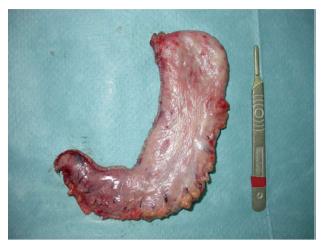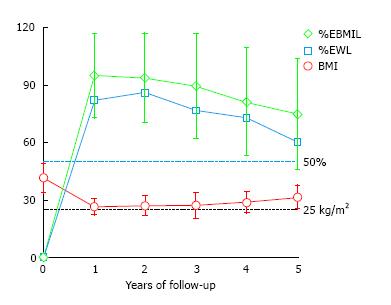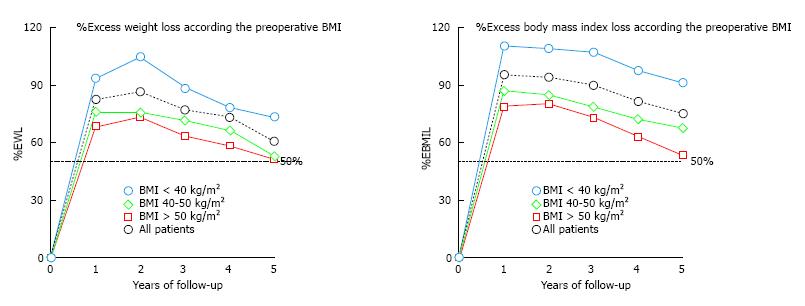Copyright
©The Author(s) 2017.
World J Gastrointest Surg. Apr 27, 2017; 9(4): 109-117
Published online Apr 27, 2017. doi: 10.4240/wjgs.v9.i4.109
Published online Apr 27, 2017. doi: 10.4240/wjgs.v9.i4.109
Figure 1 Specimen after sleeve gastrectomy.
The whole fundus had to be removed. Stapler firings must be properly aligned to avoid excessive narrowing of the sleeve and functional obstruction due to rotation.
Figure 2 Evolution of body mass index, excess weight loss and excess body mass index loss during the follow-up.
BMI: Body mass index; %EWL: Percent of excess weight loss; %EBMIL: Percent of excess body mass index loss.
Figure 3 Excess weight loss evolution and excess body mass index loss evolution according to preoperative body mass index.
Patients with a preoperative BMI under 40 kg/m2 achieve better results after 5-year of follow-up. BMI: Body mass index; %EWL: Percent of excess weight loss; %EBMIL: Percent of excess body mass index loss.
- Citation: Hoyuela C. Five-year outcomes of laparoscopic sleeve gastrectomy as a primary procedure for morbid obesity: A prospective study. World J Gastrointest Surg 2017; 9(4): 109-117
- URL: https://www.wjgnet.com/1948-9366/full/v9/i4/109.htm
- DOI: https://dx.doi.org/10.4240/wjgs.v9.i4.109











